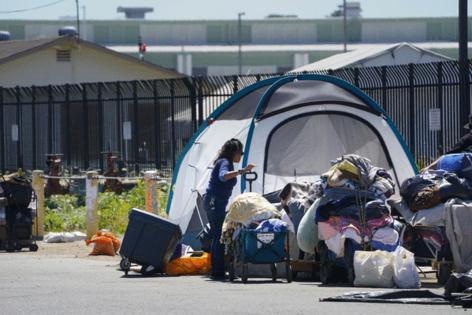Report: 80 percent of low-income San Diegans spending more than half their income on rent
Published in Home and Consumer News
The vast majority of low-income renters in San Diego County are spending more than half of their income on rent, said a new study.
San Diego's Affordable Housing Needs Report, released Thursday by the nonprofit California Housing Partnership, gave the region poor marks across the board for everything from homeless housing to subsidized rentals — and sounds the alarm on decreasing funding.
The partnership said 81 percent of extremely low-income county residents, earning $31,850 a year for an individual, were paying more than half of their income on rent in fiscal year 2022-2023. The same went for 49 percent of very low-income renters ($53,050 a year) and 12 percent of low-income renters ($84,900 a year).
"We are not putting anywhere near enough resources toward this problem," said Stephen Russell, CEO of the San Diego Housing Federation.
He said the situation could be much worse, and that the region had worked hard to bring more affordable housing to market. However, he said the county was lucky to build 1,300 subsidized units a year, way below what is needed to make up for shortfalls.
The partnership says there are 134,537 low-income renter households in San Diego County that don't have access to rent-restricted housing or naturally occurring cheaper rentals. Of the more than 200,000 low-income households, a little more than 60,000 household are in affordable units, it said.
Data for the report comes from the U.S. Census, real estate tracker CoStar, the Bureau of Labor Statistics and the U.S. Department of Housing and Urban Development.
San Diego County received $631 million during the fiscal year for affordable housing production and rehabilitation from federal and state sources, a 13 percent decrease from the previous period.
Much of the funding came from low-income tax credits, large subsidies given to developers for building rent-restricted housing. That number was up at the statewide level, 13 percent, but down 4 percent nationally. Nationwide tax credits are tied to population, and some funding was lost due to California's slight population decline.
The biggest drops were in state housing and budget allocations, and grants from the federal Housing and Urban Development department — both down 35 percent. That can mainly be explained by budget shortfalls after the pandemic years.
Russell noted California now has a budget deficit, down from the $97.5 million surplus in 2022, which means less money is available for subsidized housing. So, housing advocates are pushing for a statewide bill, AB 1657, that would allocate $10 billion for affordable housing. Part of the reason for the report was to promote the legislation and put into raw numbers the housing woes across the state.
The report said there were 9,226 beds available for homeless people across San Diego County, a mix of interim housing (like shelters) and permanent housing. That number is down by 800 from the previous fiscal year, but an increase of more than 4,000 additional beds in five years.
California Housing Partnership reasons a tenant in San Diego County would need to earn $47.67 per hour to afford the average monthly average rent of $2,479. However, that figure defines affordability as someone only paying a third of their monthly income on rent — something increasingly rare across the nation.
There were similar housing issues throughout the region. The partnership said 494,446 low-income households in Los Angeles County didn't have access to affordable housing. It also said Riverside County had 51,165 households; San Bernardino County, 58,846; Ventura County, 23,937; and Orange County, 129,693.
©2024 The San Diego Union-Tribune. Visit sandiegouniontribune.com. Distributed by Tribune Content Agency, LLC.







Comments